
Background information
iPhone turns 15: a story of revolution, campers, haters and a smartphone
by Dominik Bärlocher

I made the iPhone 16e – Apple’s successor to the iPhone SE – my main device for two weeks. I noticed five differences to the regular iPhone 16, and I now know who the e-version is suitable for.
The iPhone 16e follows in the footsteps of its SE predecessor. All three generations were low-cost by Apple standards – but had hardware that was two to three years old. Apple has largely thrown this concept overboard.
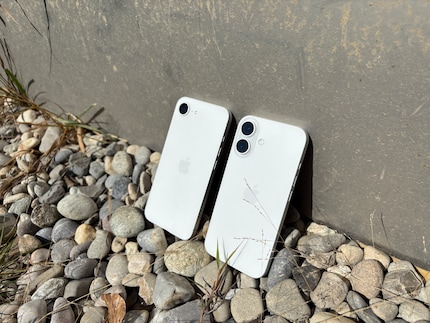
The iPhone 16e is closer to the current generation of devices in terms of hardware, differences here are smaller – but so is the difference in price. This raises an important question: how different is it really? And who will buy the device? To answer this question, I, an iPhone 16 user, switched to the 16e for two weeks.
Look and feel are subjective, true. Both models appear high-quality at first glance, but there are subtle variations in the details. The iPhone 16e has a more classic design with an aluminium frame and a matt glass back in black or white. It feels robust in the hand, but is slightly more angular than its pricier counterpart. I like it.
The iPhone 16, on the other hand, has gently rounded edges. The colour selection is much wider too, with ultramarine, teal, pink, white and black. The new colours in particular give the device a fresher look and come off differently depending on the angle of light.
One change in design and functionality is the lack of a camera button on the iPhone 16e. I don’t miss it at all. In the months since the iPhone 16 was released, I’ve very rarely used the menus for image editing, which can be called up using the button on the side of the smartphone. Although it also serves as a shutter release, you can still do this with the volume or action buttons.
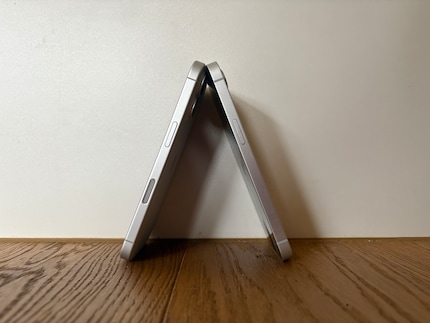
Dynamic Island – or rather its absence – is only noticeable in one place during my everyday use: when I activate the EasyRide function in the SBB app. If it’s active, it’ll be displayed on the Island. On the iPhone 16e, I have to open the app to check. And if I ever received a fare evasion fine as a result, the price difference between iPhone 16 and iPhone 16e would be null and void. Apart from that, the unusual little display doesn’t play a role in my everyday life.
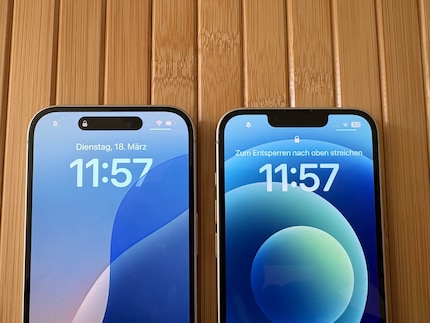
Here’s one of the biggest differences between the two models. The iPhone 16e has a single 48-megapixel main camera. The iPhone 16, on the other hand, also offers a 12-megapixel ultra-wide-angle camera, which is particularly useful for landscape shots and group photos.
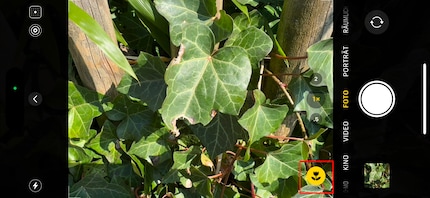
As a result, you also have to do without macro shots on the iPhone 16e. With just the one lens, it also can’t capture spatial images and video for the Vision Pro.
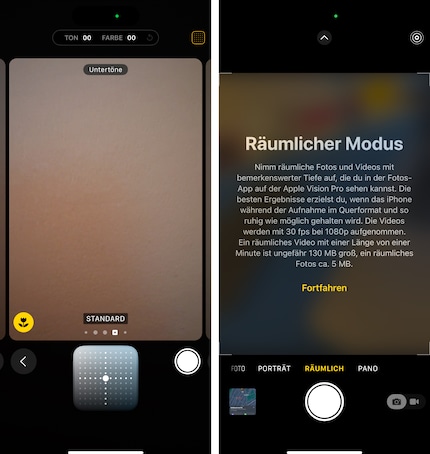
The new photo styles are also only available on the iPhone 16. That’s the option with which you can define an overall look for all pictures taken with the iPhone camera.
Differences are also visible in the results. In good daylight, both models deliver sharp, detailed images. While the iPhone 16e focuses on a somewhat higher-contrast image, photos from the iPhone 16 appear more natural overall.
The colours on the iPhone 16e are more saturated and vivid, while the iPhone 16e sometimes tends to be slightly cool, but this is also more in line with reality. On the 16e, surroundings appear more colourful than they actually are. Pictures on the iPhone 16e also look rather flat, while the iPhone 16’s shots have more depth.
The iPhone 16 has an advantage in difficult lighting conditions and night shots. Thanks to the improved processing of image depths, shadows appear more detailed: it captures light sources more softly and avoids overexposed areas.
The iPhone 16e tends to have more noise in dark scenes (especially when zooming) and less differentiated image depth.
The front cameras are identical: a 12-megapixel true depth camera. It has a fixed focus range and, as usual, no flash.
The displays of the two iPhones are identical in terms of technology and resolution. However, the peak brightness of the iPhone 16 is 1,600 nits – owners of an iPhone 16e will have to make do with 1,200 nits. I made two observations in the everyday test. On the one hand, the display of the 16e reaches its limits in direct sunlight. At a certain point, this also applies to the iPhone 16 – it lasts longer, though. In everyday life, I can read the display on the iPhone 16e easily, even when it’s very bright outside. However, colours appear more washed out.
Where I notice another difference is in HDR content. I travel by train in my everyday life, and require a frequent streamer as a result. In Mad Max: Fury Road – and probably other content with strong lighting effects – I perceived neon light more intensely on the iPhone 16, with sharper contrasts and a little more detail in bright scenes. Incidentally, you still have to make do with a refresh rate of 60 Hertz on both devices. 120 Hertz is reserved for the Pro models.
Both smartphones use the Apple A18 chip. The devices work at lightning speed in everyday tasks. However, they differ in terms of graphics: the iPhone 16 is equipped with a more powerful 5-core GPU for graphics calculations, while the iPhone 16e has to make do with a 4-core GPU. You won’t notice this when surfing, chatting or streaming. But if you really want to use your iPhone for video rendering, you’ll also notice a difference. In this case, I’d recommend the Pro version of the iPhone 16 anyway.
Both models are well positioned in terms of battery life. The iPhone 16e easily lasts a full day with moderate use, and I haven’t noticed any significant differences. According to Apple, the iPhone 16e even has an advantage when it comes to video playback, 26 compared to 22 hours for the iPhone 16.
When it comes to charging options, things look worse for the cheaper iPhone model. It only supports Qi Wireless Charging with up to 7.5 watts, while the iPhone 16 is compatible with MagSafe (25 watts) and Qi2 Wireless Charging (15 watts). The iPhone 16 is capable of more too.
Magsafe isn’t only used for charging, but also for attaching all kinds of accessories. In a car, for example, you can attach it magnetically to the appropriate bases. There’s also Apple’s practical Wallet, which stores your bank and other plastic cards. Note, you would need to get an appropriate cover for this.
Apple is breaking new ground with the iPhone 16e. It’s the first smartphone with a cellular modem manufactured in-house. Apple has said goodbye to Qualcomm’s Snapdragons with the C1 modem. The changeover, at least in this first generation, still carries some compromises:
Older Wi-Fi: the C1 only supports Wi-Fi 6, the X76 modem in the iPhone 16 comes with Wi-Fi 7. This is reflected in the speed.

No UWB: Ultra Wideband is a communication technology that primarily helps with (very) precise location finding. It transmits pulses across a very broad frequency spectrum. The iPhone 16 has this feature, the iPhone 16e doesn’t. You’ll notice this in everyday life, especially with the Find My app. You can still locate your Apple devices with the iPhone 16e, the iPhone 16 just really gets it down to the centimetre. For example, the 16e will reveal that your Airpods are at 18 Musterstrasse. On top of that, the iPhone 16 will then track your headphones all the way to your bedside drawer.
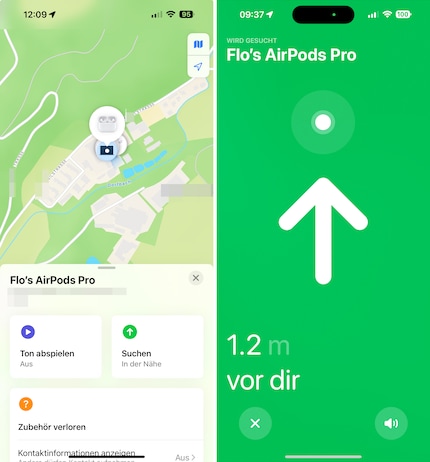
Without UWB, the iPhone 16e can’t make automatic transfers to a Homepod when you approach it. Airplay or Bluetooth are still needed for this. The digital key in UWB-enabled cars doesn’t work either.
No thread: Apple does without Thread in the iPhone 16e. Thread is the basis for Matter, the smart home standard. It makes corresponding devices compatible across all manufacturers. Here’s an example: you have a smart lamp from Nanoleaf. Thanks to Thread, it communicates directly with your iPhone 16, meaning it’ll react faster, be more stable and act more reliably than via a hub. It’ll also work faster if you give Siri a command to switch off a certain light, for example. Strictly speaking, it doesn’t even need an Internet connection since it talks directly to your iPhone. In addition, Thread consumes less power than when your devices are connected via Bluetooth. For devices with a button battery, this can certainly add a few months.
Apple has brought the iPhone 16e nearer to the iPhone 16. Both in terms of price and equipment. It fulfils the mandatory tasks with flying colours, excellently at that. The extras, however, are truly where it slows down.
After my extensive tests, I can see three main features where the iPhone 16e loses out to the iPhone 16:
If the above points are particularly important to you, I’d go for the iPhone 16. The price difference is just 120 francs, after all. Otherwise, you’ll be well served with the iPhone 16e and get a top smartphone at a slightly lower price.
However, Apple has left price-conscious fans of the SE series out in the cold with the 16e. They all bought SE models to get a low-cost entry into the iPhone world. For many of these users, a built-in chip, camera or memory aren’t important. In turn, the entry-level price increasing by 100 francs compared to its predecessor is likely to cause some displeasure.
I've been tinkering with digital networks ever since I found out how to activate both telephone channels on the ISDN card for greater bandwidth. As for the analogue variety, I've been doing that since I learned to talk. Though Winterthur is my adoptive home city, my heart still bleeds red and blue.
Interesting facts about products, behind-the-scenes looks at manufacturers and deep-dives on interesting people.
Show all
Background information
by Dominik Bärlocher

Background information
by Samuel Buchmann

Background information
by Samuel Buchmann